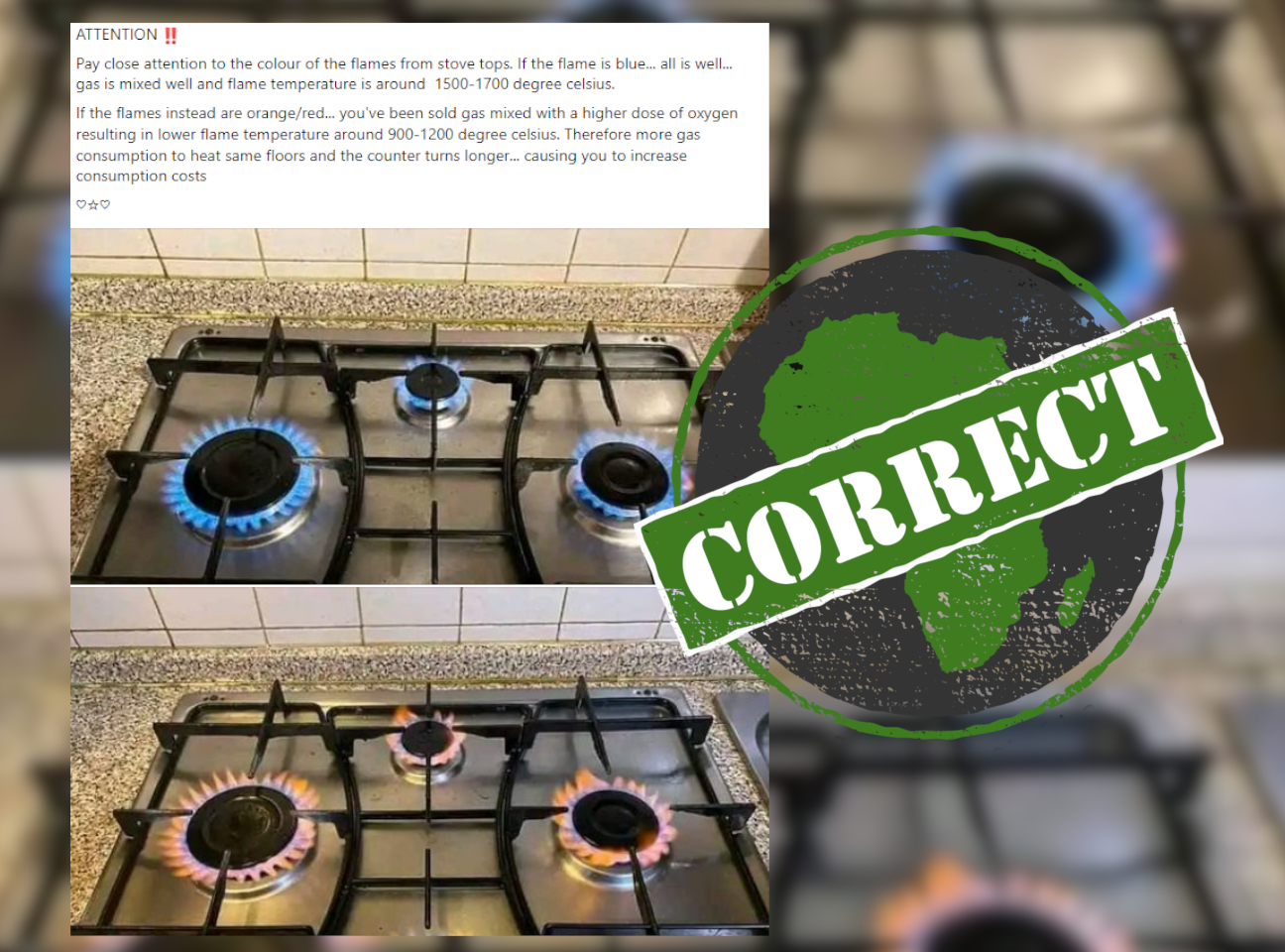IN SHORT: A Facebook post circulating in South Africa and Nigeria says an orange or red flame from a gas stove leads to more fuel consumption. This is correct. Orange or red flames are a sign of incomplete combustion.
The global energy crisis has led governments in several countries to implement electricity power cuts, and many people may be cooking on gas as an alternative to electric stove tops.
A Facebook post circulating in Nigeria and South Africa in September 2022 claims that you can tell whether your gas stove’s air-to-fuel ratio is correct by looking at the colour of the flame it produces.
The colour also gives you an indication of whether your fuel will burn out faster, it says.
"If the flame is blue … all is well", the post reads. But "if the flames instead are orange or red ... you've been sold gas mixed with a higher dose of oxygen resulting in lower flame temperature" and more gas consumption.
The same claim has also been made here, here and here.
A number of Facebook users expressed doubt at the post’s claims and it was flagged as possibly false by Meta’s fact-checking programme.
"Really? I don't believe it … this information is misleading," one commented.
So does the colour of your gas stove’s flame reveal how fast it will burn?

Combustion reactions inside gas stove
Combustion is a chemical reaction when a fuel is burned to release energy, releasing thermal energy or heat.
In South Africa, gas stoves mostly use a combustible gas called liquefied petroleum gas (LPG), stored and sold in metal gas cylinders. In the gas cylinder, LPG is in the form of a liquid. When you turn your gas stove on, the LPG begins to boil and comes out of the cylinder as gas.
In other countries and limited areas within South Africa, methane piped from gas mains is also common. With complete combustion, both LPG and methane burn with a blue flame.
Yellow, orange or red flames use more fuel
According to the Jackson Energy Authority, a US-based utility company, "a healthy, properly burning flame on gas appliances should be blue in colour, sometimes with a tiny tip of yellow, with a little light blue triangle at the centre”.
“This blue colour indicates that there is safe, efficient and more complete fuel combustion. Regardless of whether the appliance is a gas cooktop, furnace, fireplace, etc. you always want to see a blue colour flame," the company says.
Prof Jack Fletcher, director of the Centre for Catalysis Research in the chemical engineering department at the University of Cape Town, agreed. "The claim is true,” he told Africa Check, “assuming we are talking only about fuel gas and air as the two variables."
“The yellow or red colour comes from incompletely combusted carbon particles, or ultra-fine ‘soot’, which forms in the flame when there is insufficient air, or oxygen, to fully combust the fuel carbon to carbon dioxide,” Fletcher said. Sometimes this can be easily fixed by adjusting the burner’s air shutter to let more oxygen in.
Other causes of improper combustion include debris on the stove top, dust particles or a dirty burner, the type of gas used or signs of a more serious problem that a professional should check.
“A yellow flame means you are not getting the maximum possible energy, or heat, from the fuel and so for the same heating or cooking duty you will need to use more fuel gas under yellow-flame conditions than would be the case for blue-flame conditions,” Fletcher told Africa Check.
The Facebook posts are correct. An orange or red flame on a gas stove will burn more fuel than a blue flame.
Republish our content for free
For publishers: what to do if your post is rated false
A fact-checker has rated your Facebook or Instagram post as “false”, “altered”, “partly false” or “missing context”. This could have serious consequences. What do you do?
Click on our guide for the steps you should follow.
Publishers guideAfrica Check teams up with Facebook
Africa Check is a partner in Meta's third-party fact-checking programme to help stop the spread of false information on social media.
The content we rate as “false” will be downgraded on Facebook and Instagram. This means fewer people will see it.
You can also help identify false information on Facebook. This guide explains how.


Add new comment